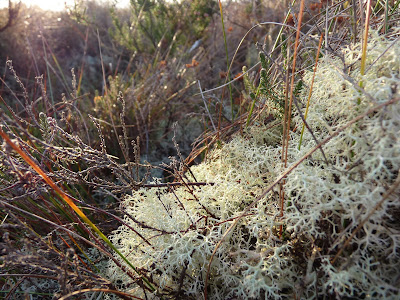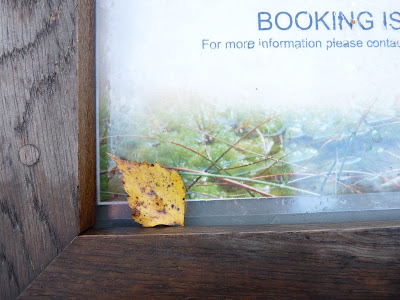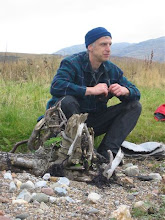












Walking on the Moss is hard, not quite like the gentle sauntering of Henry Thoreau but still walking is good and walking is work, in fact some of my best and most productive work is done when walking..but don't tell that to my line manager.
Today is hydrological monitoring - that is when the water level with the peat is measured at 22 points around the Moss and this involves a lot of walking. It is a great day, absolutely still with some sun and some cloud but cool. A perfect day for walking. Walking on Flanders is tough, the ground is often calf deep in water, soft and squelchy and dotted with knee high hummocks of sphagnum. To get anywhere requires a lot of effort and a special gait of lifting your knees high, taking long strides and keeping up your momentum. A stick helps, like a third leg and after a while you get used to making progress across the bog but you do have to remember to switch it off once back on dry land. A mountain man who had started his second round of Munro's came out to do the monitoring with me once but it was new terrain to him and at the end of the day once we made it back to the car park he did a Pope and kissed the hard ground in relief.
Walking is the only way to see the moss and by getting out there you can see the changes on the moss. It may have been there for 7000 years but the Moss is still constantly changing. The seasons, rainfall, past and present management, sheep and deer grazing all change the surface of the Moss. These factors have made the surface very variable, the sphagnum carpet can be flat or hummocky, complete or patchy, the Cladonia lichens dusting the surface or absent, invasive rushes and polytrichum mosses taking over from peat forming sphagnum. Reading these signs helps in the understanding of what has gone on before and what is happening now. It also helps you spot hidden, sphagnum filled ditches before you end up waist deep in them. A balance is needed between scanning the ground in front of your feet and looking around. Too much watching the ground and you will miss the buzzard in the tree, the hen harrier quartering in the distance, the roe deer browsing but too much looking around and your day will be spoilt by an unnoticed ditch.
So a strange, long striding gait, stick in hand and your head nodding up and down doesn't make a good look but who's to see you? And it makes the 7 hours walking an intensive experience that has you blinking back to reality when you find yourself back at the truck with the sun dipping below the horizon. Magic - now where is the bath and the whisky?




























